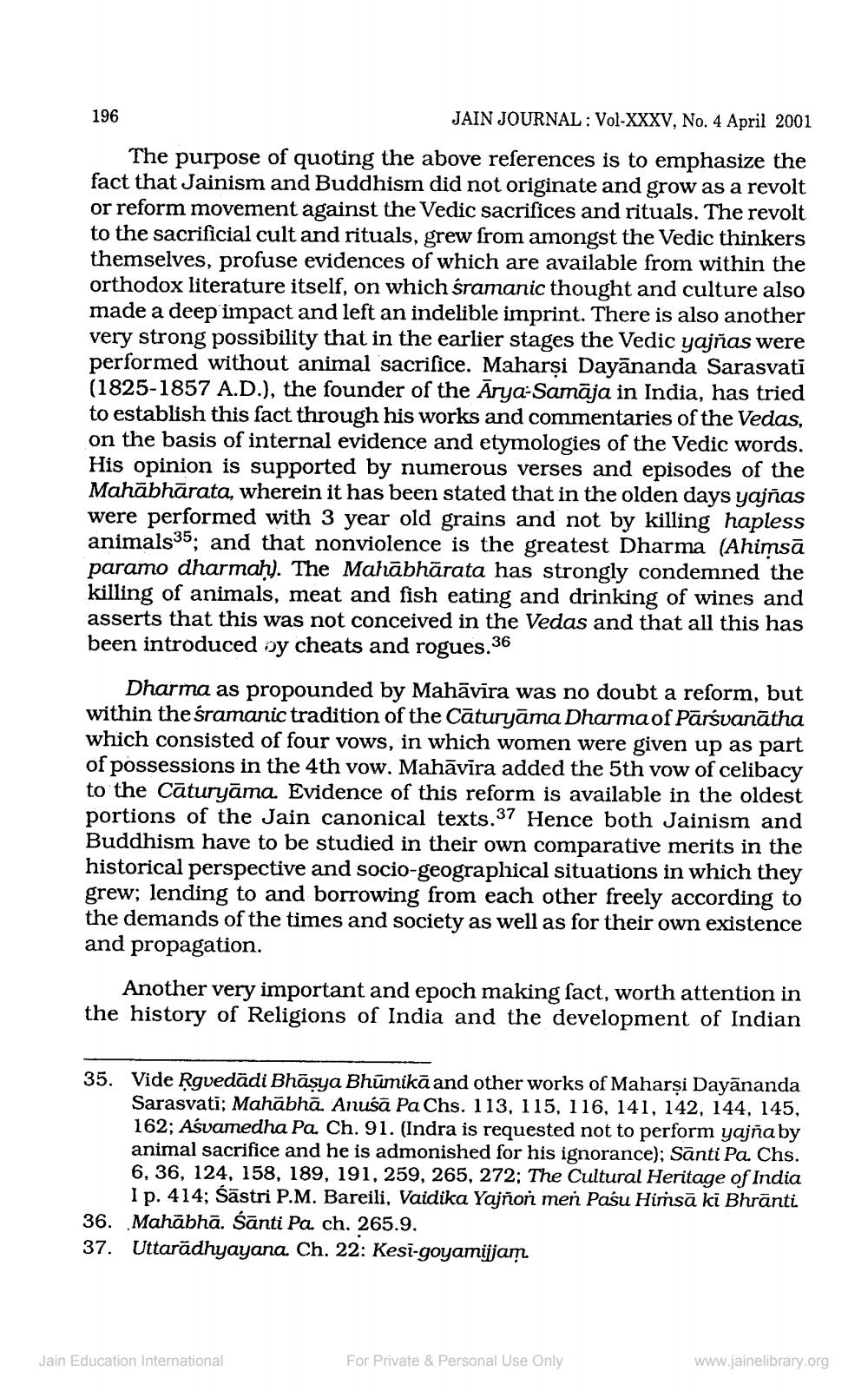________________
196
JAIN JOURNAL: Vol-XXXV, No. 4 April 2001
The purpose of quoting the above references is to emphasize the fact that Jainism and Buddhism did not originate and grow as a revolt or reform movement against the Vedic sacrifices and rituals. The revolt to the sacrificial cult and rituals, grew from amongst the Vedic thinkers themselves, profuse evidences of which are available from within the orthodox literature itself, on which śramanic thought and culture also made a deep impact and left an indelible imprint. There is also another very strong possibility that in the earlier stages the Vedic yajñas were performed without animal sacrifice. Maharsi Dayānanda Sarasvati (1825-1857 A.D.), the founder of the Arya:Samāja in India, has tried to establish this fact through his works and commentaries of the Vedas, on the basis of internal evidence and etymologies of the Vedic words. His opinion is supported by numerous verses and episodes of the Mahabharata, wherein it has been stated that in the olden days yajñas were performed with 3 year old grains and not by killing hapless animals35; and that nonviolence is the greatest Dharma (Ahimsā paramo dharmahy. The Mahābhārata has strongly condemned the killing of animals, meat and fish eating and drinking of wines and asserts that this was not conceived in the Vedas and that all this has been introduced oy cheats and rogues. 36
Dharma as propounded by Mahāvīra was no doubt a reform, but within the śramanic tradition of the Cāturyāma Dharmaof Pārsvanātha which consisted of four vows, in which women were given up as part of possessions in the 4th vow. Mahāvira added the 5th vow of celibacy to the Cāturyāma. Evidence of this reform is available in the oldest portions of the Jain canonical texts.37 Hence both Jainism and Buddhism have to be studied in their own comparative merits in the historical perspective and socio-geographical situations in which they grew; lending to and borrowing from each other freely according to the demands of the times and society as well as for their own existence and propagation.
Another very important and epoch making fact, worth attention in the history of Religions of India and the development of Indian
35. Vide Rgvedādi Bhāsya Bhūmikā and other works of Maharşi Dayānanda
Sarasvati; Mahābhā. Anušā Pa Chs. 113, 115, 116, 141, 142, 144, 145, 162; Aswamedha Pa. Ch. 91. (Indra is requested not to perform yajña by animal sacrifice and he is admonished for his ignorance); Santi Pa. Chs. 6, 36, 124, 158, 189, 191, 259, 265, 272; The Cultural Heritage of India
I p. 414; Šāstri P.M. Bareili, Vaidika Yajñon men Pasu Himsā ki Bhranti 36. Mahābhā. śānti Pa. ch. 265.9. 37. Uttarādhyayana. Ch. 22: Kesi-goyamijjam
For Private & Personal Use Only
Jain Education International
www.jainelibrary.org




